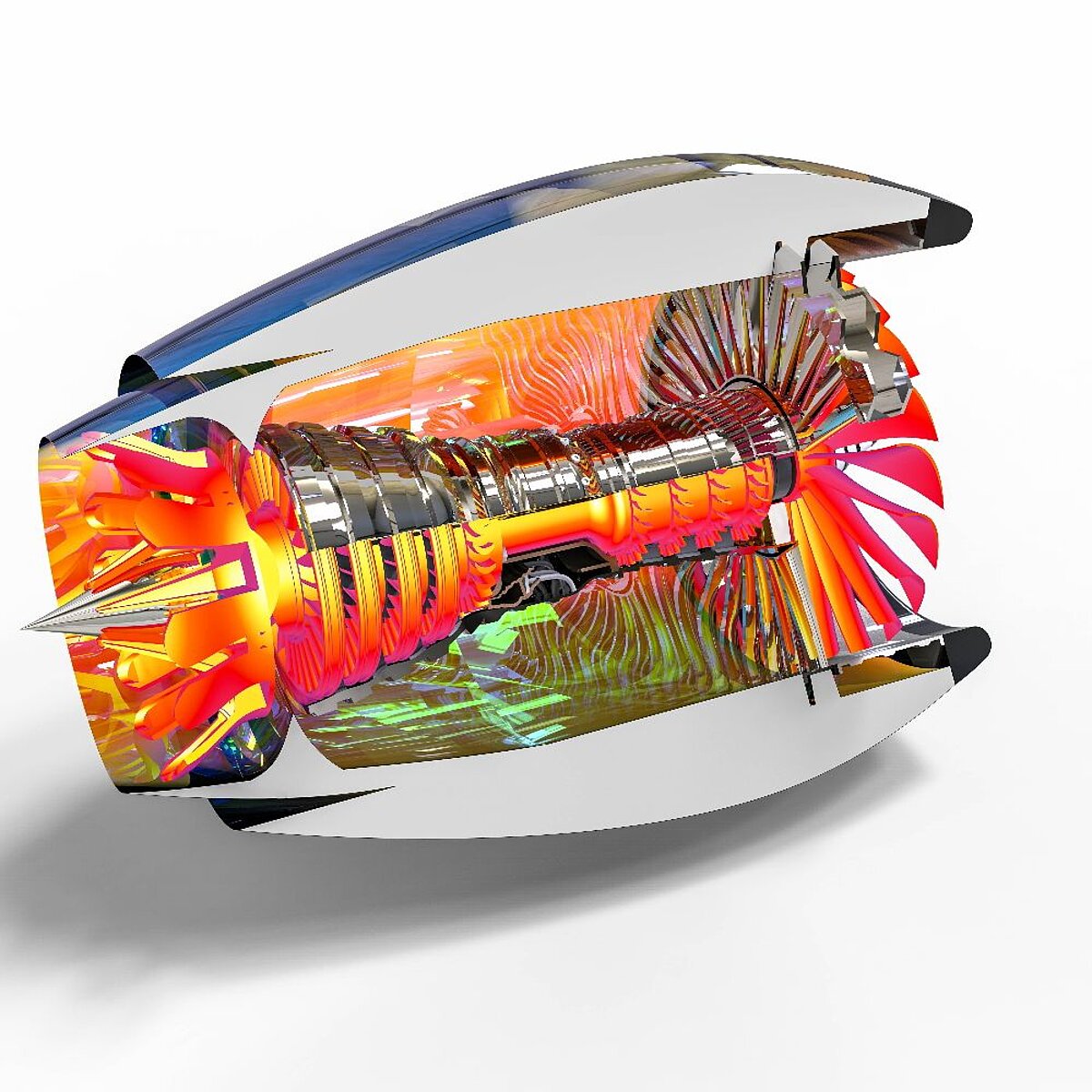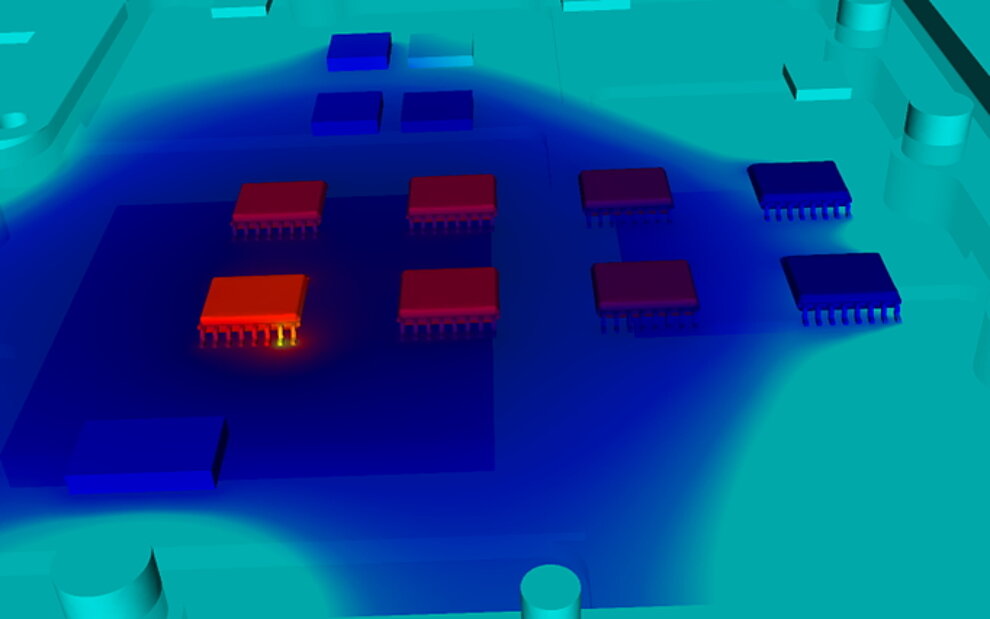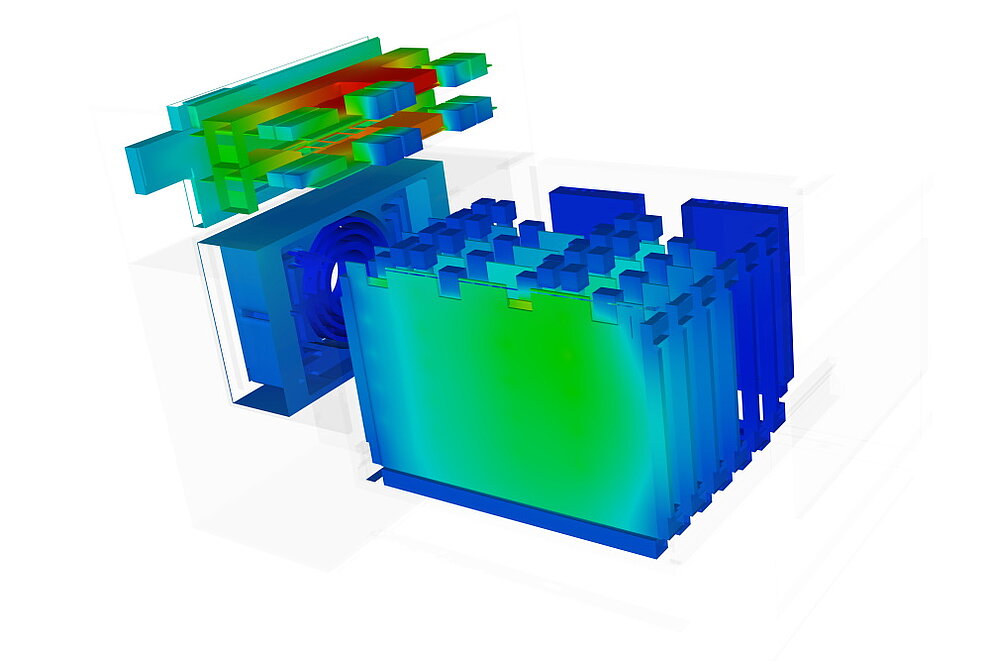Thermal simulation

Calculation by FEM simulation
Temperature calculations can be simplified using FEM by specifying the heat transfer coefficients and the fluid temperatures, insofar as these are known. However, these calculations are often not sufficiently accurate. Especially when free convection is involved and the heated air cannot rise without obstruction. These smeared approaches are also too inaccurate in the case of high temperature gradients in the fluid and different flow conditions.
In these cases, flow simulation using CFD is the more suitable approach. With FEM methods, empirically determined data is used to determine the heat transfer coefficients, as can be found in the heat atlas, for example. In the flow calculation, on the other hand, the heat transfer coefficients are a result. This means that you do not have to rely on assumptions and also know the flow properties of the fluid very precisely.
Scope of application
The temperatures are often used in the simulation if we want to determine thermomechanical deformations or stresses, for example. Mechanical material properties as well as thermal properties are also a function of temperature and must be taken into account.
Often it is not only the temperature but also the heat transfer that is important, e.g. for heat exchangers, thermal management of motors or the cooling of printed circuit boards.
Flow calculation and structural calculation are different departments in most companies, with structural calculation being more widespread than flow calculation.
Many service providers have focused on either one area or the other. One of our unique selling points is that we use both methods equally, but in particular we also work on cross-divisional topics and have extensive expertise in this area.
In coupled FEM/CFD simulations, data must be exchanged between different programs. If you master this, as we do, you can solve the physics with the appropriate tools and are not dependent on "crutches".
We will show you which calculation options are available for your application and suggest the right approach as a compromise between the required accuracy and effort.


Summary
Thermal simulations performed using FEM (Finite Element Method) and CFD (Computational Fluid Dynamics) calculations are crucial for the analysis and optimization of thermal management systems. They enable the prediction of steady-state or transient heating and cooling processes in various materials and structures, including the heating of printed circuit boards and the heating of components. The simulations take into account the bulk temperature as well as the thermal conductance and heat flux generated by convection - both forced convection and free convection - and radiation. The Grasshoff number helps determine the type of convection, while the Reynolds number and Nusselt number are used to characterize the flow and heat transfer conditions.
Thermomechanics, which describes the interaction between thermal and mechanical properties, is also an integral part of the simulations, as it provides information about the behavior of materials under the influence of heat. These calculations are essential for the efficiency of heat exchangers and cooling systems, such as cooling coils and cooling holes. They ensure that the insulation and air conditioning of buildings is optimized, taking into account the flow through the building and the heat capacity of the materials.
Heat transfer coefficients (K-value), heat transfer values and thermal resistance are critical parameters that play a role in heat conduction and heat transport, including transport through particles. These simulations are relevant not only for stationary but also for transient processes to analyze time-dependent phenomena such as combustion. Finally, the heat atlas serves as a comprehensive source of thermophysical properties and facilitates the accurate modeling and coupling of heat transfer processes.